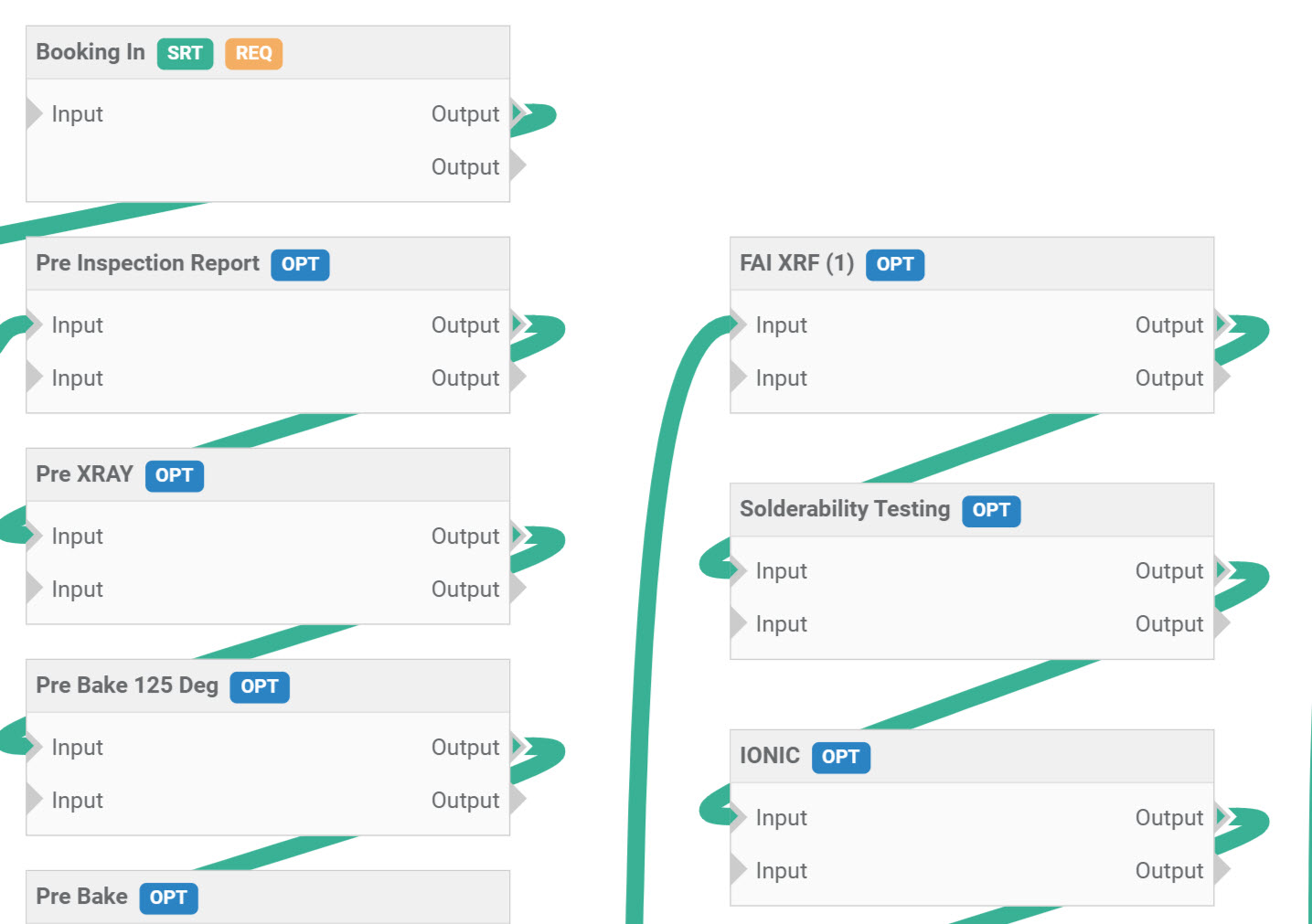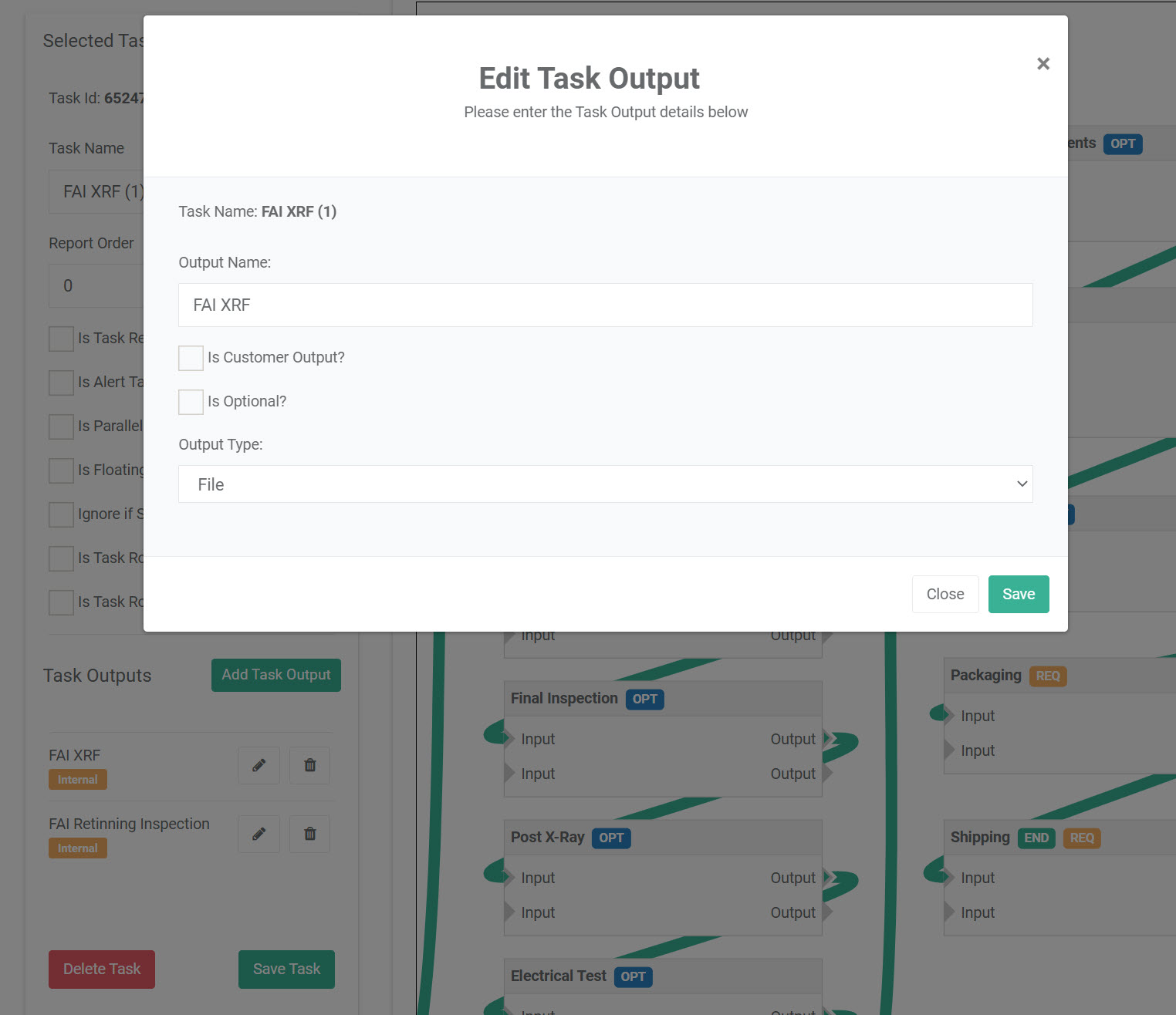Case Study - Factory Flow Designer
Factory Flow Designer
Factory flow design with no-code rules and logic
The challenge
What happens when creating new flows within an electronics factory is simply taking too long? In many cases, inefficiencies occur, and the longer they continue, the more difficult they are to eradicate.
This was the scenario we faced when an electronics manufacturer turned to us for help. They needed a flexible way to manage their factory flows, and they needed it quickly. Without it, they would continue struggling in their attempts to deliver the flexibility and customization levels demanded by their customers.
This client had a particularly large operation, so their requirements and specifications — for processes such as re-balling and re-tinning — were as complex as they were lengthy. They turned to us to enhance the design and implementation of their factory flows.
We were tasked with delivering a near-instant, fully customizable solution. And if that wasn’t challenging enough, the client wanted to demonstrate this solution to customers during factory audits.
Our solution
At isai, we like to get onto the factory floor and spend time with our clients and their teams. And that’s exactly what we did. We needed to see the operation at close quarters in order to analyse the issues at play.
By immersing ourselves in the operation, we were able to create a list of essential action points that would deliver the long-term change required.
- Flexible Design and Modifications - To ensure the factory flows would be able to adapt to changing scenarios, we needed to make the design and modification process as flexible as possible. But that wasn’t enough. Changes needed to be made without the need for re-coding to ensure a fast, agile flow.
- Configurable Flow Tasks - A range of tasks needed to be taken into account when designing factory flows. The likes of client specifications, diagrams and relevant documents all needed to be configurable during the design process.
Essential outputs such as consumable verification, form completion, photos and inspection confirmations were associated with several flow-dependent tasks. To deliver maximum flexibility, we needed to ensure all of these outputs were configurable during the design process. - Optional tasks - We decided that task routes needed the ability to navigate complex paths. In addition, we wanted to make each task optional.
The results
This collaboration was a great example of what’s possible when we take an immersive, face-to-face approach to factory flow design. Together, we developed a highly flexible, web-based system that allowed our clients to design, create and manage complex factory flows in minutes.
We were also able to fully integrate the new task flows with the rest of the factory management system. Today, the new approach guarantees a fully auditable factory flow — from component delivery to shipping.
From the outset, we wanted to give our clients the ability to provide transparency to their clients. Our client was happy to report increased audit efficiency — something that fostered a spirit of mutual trust with their customers. In addition, there was a significant reduction in operator mistakes, leading to higher productivity and lower production costs.
We were proud to leave behind a system that allows for real-time task flow changes. Because we took the time to assess the entire operation and identify potential improvements, factory managers can now identify issues immediately and take the appropriate corrective action.
Ultimately, we were able to dramatically increase the efficiency of the operation while slashing downtime.

